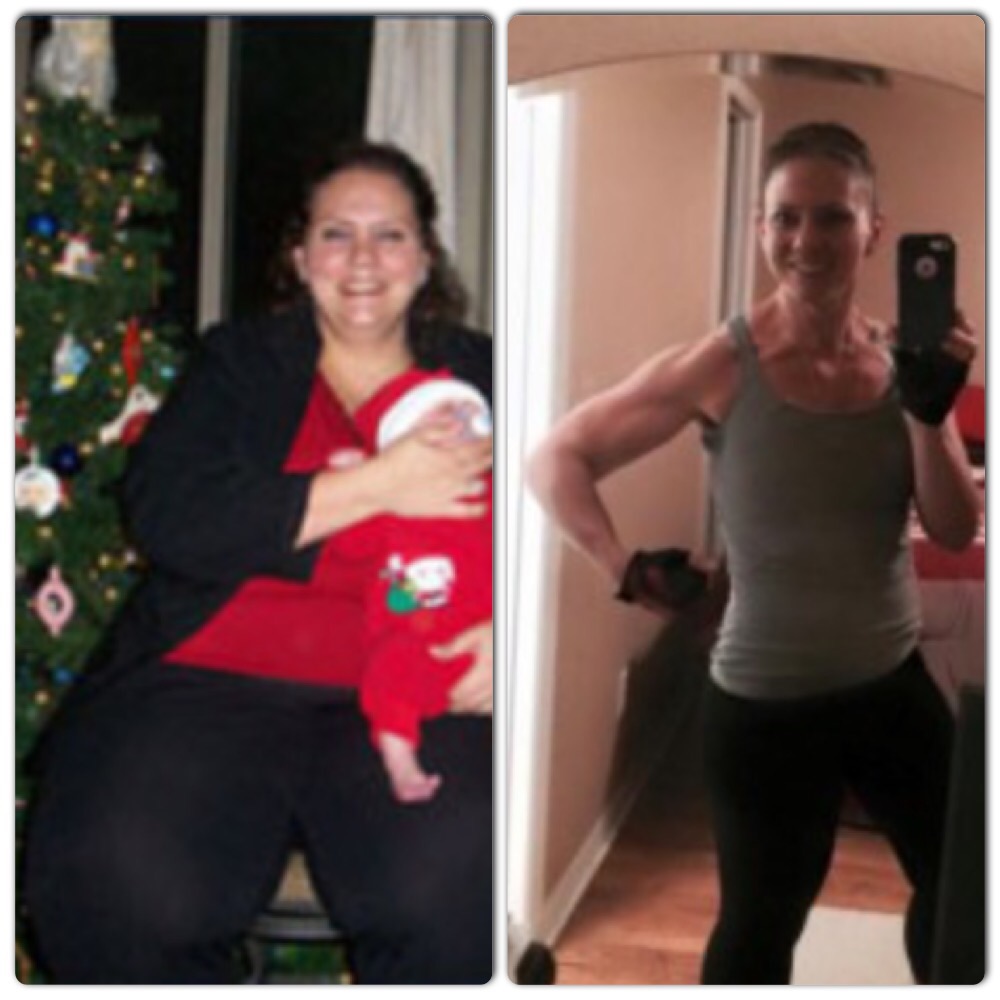
by EM2WL | Jun 23, 2015 | Fat Loss / Cutting, Interviews/Guest Posts, Metabolism Reset
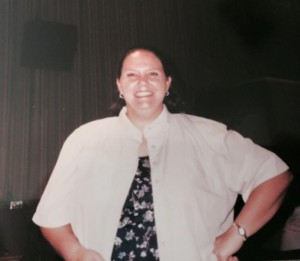 When did you first learn that you needed to eat more to reach your goals? What was your original response?
When did you first learn that you needed to eat more to reach your goals? What was your original response?
After hitting my weight loss goal with Weight Watchers in 2012, I was working out on average an hour per day, almost every single day, and feeling extremely hungry all the time. I felt like I was having to white-knuckle my eating in accordance with my exercise.
I couldn’t figure out why it was such a struggle to maintain my body weight. I started doing some research and found that, on average, I was eating around 1900 calories a day, maybe 2000 when you averaged it out over the week. I stumbled across “Eat More to Weigh Less” and some other blogs promoting the idea of eating according to your TDEE and activity level and I felt like a light bulb had gone off. I had been far under-eating for my activity level. I purchased a Body Media Band at the time and was astonished to realize that on certain days I was burning 2,600 to 2,700 calories a day, because of all my activities. I realized at that point that I was just not well-informed on how much calories my body required in order to maintain my weight. My dietary habits were based on a point system that wasn’t working for me anymore. Of course, my next response after this realization was thinking, “Yay! I get to eat more food.”
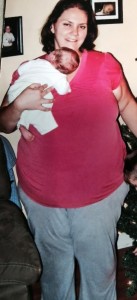 How did your body and scale in clothes, etc, react to the initial increase in calories?
How did your body and scale in clothes, etc, react to the initial increase in calories?
I felt a little bit bloated around my midsection, and I did see an initial creep up in weight on the scale. I was maintaining my weight between 150 and 152 pounds. I noticed my weight would hit, at most, 158 pounds, but ultimately I just felt a bit more puffy from all the extra food I was eating.
The last time I spoke with you (Kiki and Lucia), I had just started my cut at 2,100 calories with a 500 calorie deficit.
Has your calorie intake changed over the past two years, and if so, how?
My calories really haven’t changed much. I’ve been tracking them as of late because I’m currently cutting again. What I have noticed is that they typically fall between 2,300 and 2,600 per day, depending on my activity level. In the last two years, for the most part, I’ve kind of stayed within the same activity range and thus the same calorie range. I would say that, over all, I think most people (especially fairly active people) are probably unaware of how much they are burning in a day. I know I was really shocked when I learned about my own caloric levels.
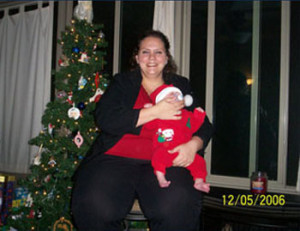 Have your fitness and health goals changed? For example, do you still monitor aim or maintain scale weight, or has your focus shifted more to performance or other goals?
Have your fitness and health goals changed? For example, do you still monitor aim or maintain scale weight, or has your focus shifted more to performance or other goals?
I actually do both. I am working on gaining strength. I’ve increased my squats, dead-lifts, bench presses. I’ve been focusing on all that, but I also keep an eye on the scale for myself. Having battled my weight my entire life, I’m not completely comfortable not checking on it. I created what I felt was a realistic weight range for me, 150 – 160 pounds. However, I’m more focused on gaining strength and building muscle and less on just losing weight. As long as I honor my commitment to myself by not gaining back the weight I lost initially, I’m fine.
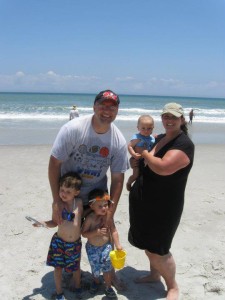 What has been the biggest revelation you’ve had since increasing your calories and lifting heavy weights?
What has been the biggest revelation you’ve had since increasing your calories and lifting heavy weights?
That it all balances out. Your weight training really impacts your metabolism. I never understood this. It shocks me how much I can eat and still be able to maintain my scale weight, and it’s because I lift weights. I feel completely different on the days I lift versus the days I don’t. My hunger levels are different. The foods I can eat are different. I’ve learned I can eat a heck of a lot more and still lose weight. That’s because I have a healthy metabolism now. And I attribute this change to taking the time to learn how to better feed my body in relation to my activity level from wonderful sites like Eat More to Weigh Less and others.
What method device do you use to determine your caloric intake? If you do use a Body Media or Fitbit, do you find it to be fairly accurate in terms of how much you are able to eat?
Yes, I use a Fitbit right now; although, I’ve used a Body Media Band in the past. Both devices typically show my caloric intake around the same place, which is anywhere from 2,200 calories all the way up to 2,700 calories per day. Most of these devices do not take into consideration things like weight training. However, they do capture my overall activity level and I have found them to be fairly accurate. If I were to take a cut in my calories using my Fit Bit as a guide, I’d find I don’t have to go to an extremely low calorie range to start losing weight.
If I gain enough weight to put me out of my personal weight range and I need to cut back, I typically focus on removing 500 calories from my daily intake. If I find that my average calorie burn is 2,400 during an average 7-day cycle, I know that if I eat around 1,900 calories, I will be able to lose weight. When I do this I’ll typically lose about a pound per week. However, many people think 1,900 calories is what they need to maintain their weight. Understanding what I actually need to maintain my weight versus lose weight was extremely eye-opening for me.
Now that you’re in maintenance, how do you stay motivated each and every day?
I stay motivated because I typically share a lot of what I learn with other people. I’m here to help inspire, motivate women to not only lose this weight, but to find a way that they can keep it off forever. I also find that it’s really not as difficult as I thought it was. When I was white-knuckling it at the beginning, it was extremely difficult because I was hungry all the time. Now that I know how much I can eat and I found an activity I really enjoy, it’s really not as painful as I once thought it would have been. Overall, I guess I have found something that I can do for the rest of my life. I found that I can eat this way for the rest of my life, enough it makes maintenance really not as difficult as I once thought it would be.
 Any parting words of encouragement for those who are new to eating more, struggling with the decisions to fuel properly?
Any parting words of encouragement for those who are new to eating more, struggling with the decisions to fuel properly?
If you’re maintaining your weight on a very low amount of calories, I highly recommend you take the gamble and do a reverse diet or metabolism reset. I always ask myself the question, “Can you continue to do what you’re doing for the rest of your life?” If I had to eat at 1,900 calories for the rest of my life, always feeling hungry, I don’t think I would have been able to maintain my weight loss.
So, if you were dieting down and eating 1,500 calories a day, and now you have to eat that amount of calories just to maintain your weight because your body has gotten used to it, I ask you, what other choice do you have? Well, you have two choices, actually. One, live with eating 1,500 calories for the rest of your life and be perpetually hungry. Or do a slow metabolism reset, where you increase your calories over time, and begin to let your metabolism repair itself from all the prolonged dieting you’ve done. Yes, you may gain a few pounds. My weight went up about 8 pounds total. 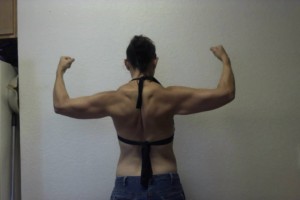 However, I can honestly say it’s the best 8 pounds I’ve ever gained! It was a great experiment for me to learn what my body needed and how I could feed it more fuel so I could enjoy my life more. There’s no point in dieting down just to be miserable for the rest of your life. Find a way that you can eat and move that you love and that is sustainable for you for the rest of your life.
However, I can honestly say it’s the best 8 pounds I’ve ever gained! It was a great experiment for me to learn what my body needed and how I could feed it more fuel so I could enjoy my life more. There’s no point in dieting down just to be miserable for the rest of your life. Find a way that you can eat and move that you love and that is sustainable for you for the rest of your life.
You can find out more about me and all the different things I have going on at HalfSizeMe.com. And be sure to check out my podcast, The Half Size Me Show, which is available in iTunes and Stitcher radio. I also have a Facebook page where I post videos and other content to help people. I’d love to connect with you on any social media platform.
Website: http://www.halfsizeme.com/
Podcast: http://www.halfsizeme.com/category/podcast/
Facebook: https://www.facebook.com/HalfSizeMe
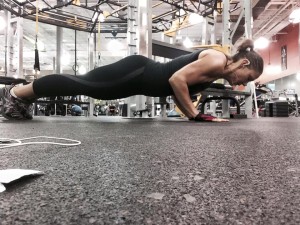 After spending most of her life since childhood overweight or morbidly obese, Heather Robertson finally resolved to lose the weight. It took five years, during which time she had three c-section pregnancies and a double-hernia operation, but she managed to lose 170 pounds. Over the past three years since reaching her goal weight, she’s learned the importance of developing a maintenance mindset.
After spending most of her life since childhood overweight or morbidly obese, Heather Robertson finally resolved to lose the weight. It took five years, during which time she had three c-section pregnancies and a double-hernia operation, but she managed to lose 170 pounds. Over the past three years since reaching her goal weight, she’s learned the importance of developing a maintenance mindset.
She founded the Half Size Me Community with her husband, who also produces her popular podcast, The Half Size Me Show, which was recently listed on The Huffington Post as being one of the 19 Best Health/Fitness Podcasts.
Heather’s driven to teach others how to live healthier, happier lives. She does this by hosting her podcast, working with the Half Size Me Community, and as a Life Coach who specializes in weight loss, habit change, and self-acceptance.

by | Apr 23, 2015 | Increasing calories, Metabolism Reset, Testimonials, The Journey
I’ve always been on a diet. I’m sure that’s not quite the case but I can’t remember NOT thinking about food in terms of “fat vs skinny” and “bad vs good.” When I was probably around 10 my mom and I went on The Beet and Ice Cream Diet. Yes, it’s exactly what it sounds like. For the record, it has taken about 25 years for me to eat another beet… I also recall that around this time I was actually being paid to lose weight, and I was absolutely thrilled when I got the flu. All this before the age of 12, and that set me up nicely for high school years marked by food anxiety, laxative abuse, binging and purging, cardio sessions that were literally hours long at a time, and most significantly, an extended bout with anorexia in which at the last weigh-in I remember I was 102 on my 5’9’’ frame. (I definitely want to say that eating disorders are never about food per se – there are underlying issues generally centering around feelings of control – but a childhood fraught with food anxieties can create an environment quite conducive to using eating disorders as an outlet for working through those issues.)
taken about 25 years for me to eat another beet… I also recall that around this time I was actually being paid to lose weight, and I was absolutely thrilled when I got the flu. All this before the age of 12, and that set me up nicely for high school years marked by food anxiety, laxative abuse, binging and purging, cardio sessions that were literally hours long at a time, and most significantly, an extended bout with anorexia in which at the last weigh-in I remember I was 102 on my 5’9’’ frame. (I definitely want to say that eating disorders are never about food per se – there are underlying issues generally centering around feelings of control – but a childhood fraught with food anxieties can create an environment quite conducive to using eating disorders as an outlet for working through those issues.)
Fast forward a bit and I finally had a relatively normal relationship with food. I was a healthy weight (about 135 – 145, I never owned a scale) and ate like a “normal” person: I ate when I was hungry, I ate healthily but indulged when I wanted, and I ran and did yoga when time permitted because it felt good to move. I felt I looked ok but was never happy with the way I looked. And I even made peace with that. I felt with my ED background I was probably never going to have a good sense of what I looked like and regardless, I was probably never going to be happy about it. Uplifting huh? Resigning oneself to a lifetime of meh?
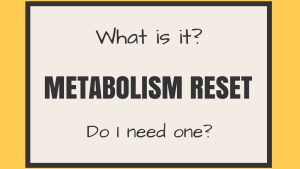 Fast forward a bit more and a more sedentary, office-sitting lifestyle meant I gained a few more pounds. I couldn’t even say what my weight was but I’m going to guess between 155 and 165. I decided to get fit. Bring on the cardio! I began running and doing Insanity, counting calories, the whole deal. I even threw some weight training in there, but I was not lifting heavy enough nor was I eating to support any sort of positive muscle gains. With cardio of 1 hour plus daily (with long runs of 2 hours or so once a week), calories down to between 1500 and 1700 (with a once per week cheat of 1900 – 2000, I’m shaking my head typing this), and carbs shunned like the devil, I got down to 149. For a nanosecond. It was great to see that “14” at the beginning of my scale number. And guess what. I still didn’t like how I looked, I felt like I was moving through mud every day, it didn’t last. The weight just seemed to start piling back on. Restricting or not, running or not, nothing seemed to slow down the weight gain.
Fast forward a bit more and a more sedentary, office-sitting lifestyle meant I gained a few more pounds. I couldn’t even say what my weight was but I’m going to guess between 155 and 165. I decided to get fit. Bring on the cardio! I began running and doing Insanity, counting calories, the whole deal. I even threw some weight training in there, but I was not lifting heavy enough nor was I eating to support any sort of positive muscle gains. With cardio of 1 hour plus daily (with long runs of 2 hours or so once a week), calories down to between 1500 and 1700 (with a once per week cheat of 1900 – 2000, I’m shaking my head typing this), and carbs shunned like the devil, I got down to 149. For a nanosecond. It was great to see that “14” at the beginning of my scale number. And guess what. I still didn’t like how I looked, I felt like I was moving through mud every day, it didn’t last. The weight just seemed to start piling back on. Restricting or not, running or not, nothing seemed to slow down the weight gain.
At this point I started doing some research and decided that ok, scale weight, who cares. I just want to look good and feel better. I discovered the New Rules of Lifting for Women and began lifting heavy and eating at what I thought would be maintenance. The scale was not kind but I felt like I had no choice; nothing else was working so at least I was putting on some muscle. Around this time I also found EM2WL, and Kiki, Lucia, and Anitra really helped me confirm that I was on the right path and I officially undertook a reset.
The reset was kind of awful, not gonna lie. I felt like a big bag of squishy water. Very sausage-esque, and oh it was summer by the way. I tried to concentrate on the fact that my lifts were going up, I was seeing some muscle pop through on rare occasion J, and that I was getting healthier. I stuck through the reset for the 12 weeks, not counting my NROLFW start, and then moved to the cut phase. My start-of-cut weigh-in in September 2013 was 172, but truthfully I may have gotten higher during reset – I stayed off the scale completely during the 12 weeks because I knew it would be a huge deterrent. The reason I am guessing the scale was higher at some point is because my weight (judged from pictures and clothes) seemed to level out and even drop a little bit towards the end of the reset. This, coupled with the fact that I realized I actually was not looking forward to cutting at all, told me I was ready to cut. Irony is a cruel mistress.
The scale was very slow to start moving on that first cut. Pretty much nothing happened until December after an initial 3 lb water weight drop over 2 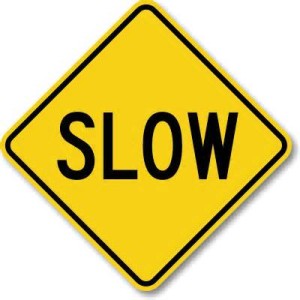 weeks or so. Yes, 3 months of nothing happening! Then by 3/31/14 I was at 162. By 6/30/14, 158 and at 9/30/14, 157.8. The dreaded plateau. I had been taking breaks throughout but knew I was cutting for a long time; I decided to give it a little more of a chance and evaluate. Well, at 11/30/14 I was at 157.2 AND measurements weren’t going down so I said to hell with this. Maintenance break. I ate at maintenance until 1/18/15 and stayed the same weight. I even ate a little above during that time. Then I resumed a cut, taking 2 week long breaks during 2 months and found myself at 150.4. Yes, 7 lbs came off just like that, and that has never ever ever been the case for me.
weeks or so. Yes, 3 months of nothing happening! Then by 3/31/14 I was at 162. By 6/30/14, 158 and at 9/30/14, 157.8. The dreaded plateau. I had been taking breaks throughout but knew I was cutting for a long time; I decided to give it a little more of a chance and evaluate. Well, at 11/30/14 I was at 157.2 AND measurements weren’t going down so I said to hell with this. Maintenance break. I ate at maintenance until 1/18/15 and stayed the same weight. I even ate a little above during that time. Then I resumed a cut, taking 2 week long breaks during 2 months and found myself at 150.4. Yes, 7 lbs came off just like that, and that has never ever ever been the case for me.
That was about 3 weeks ago. I evaluate my progress on a monthly basis, so next week we’ll see what the data tells me. I’d like to drop a little bit more fat but you know what? I actually finally kind of like the way I look. I look way better than when I reached that cardio/low cal/low carb 149. Way better. I have muscle now. I’m definitely stronger and happier. Oh, and I can eat. I can maintain at almost 1000 calories more than those old days and while I am pretty active outside of work, I’m not a slave to the treadmill anymore. I lift, I run probably once per week, I spin, I yoga. I do whatever I feel like because it makes me feel good and because now my goals are skill-related (doing a pullup, hitting a bench PR, achieving that yoga pose), not because I have to reach a certain calorie burn.
So that’s my story. Here are some takeaways.
1. Reset sucks but it’s necessary. If you think you can skimp on it you are just setting yourself up for a more drawn out frustration.
2. The cut part is slow. It took a long time to get moving. (And the cut part sucks too, lol. When it does suck that’s when you know you are ready to cut.)
3. When it gets too slow after a while, don’t fight it. Take a break. Your body will win this one so might as well play along. That long break worked for me. I think with a tough plateau, a week or 2 weeks isn’t going to cut it. I’m thinking you need to break for much longer.
4. You must lift weights if you want to change how you look and support a healthier metabolism.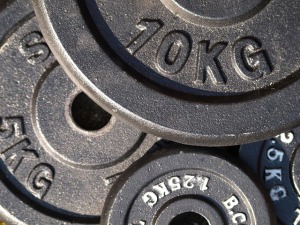
5. Not being focused on the scale but progress in the gym (faster run times, bigger lifts, accomplishing or working on certain bodyweight exercises) also helped me. It’s a mindset shift but once I managed to believe in it, I think the aesthetics are coming more naturally and with less stress.
6. Speaking of the scale, only pay attention to what it has to say IF you are also taking pictures, taking measurements, and using clothes to measure progress. By itself it is a glorified paperweight.
7. Working on controlling stress, or rather my reaction to it, has helped immensely.
8. Did I mention lifting weights? Heavy weights?
 Having said that, I’m still a work in process. And I always will be, and not because I’m broken but because I will continue to grow. So far I’ve worked hard to free myself from The Beet and Ice Cream Diet mentality, and it feels good. I don’t have all the answers and many times need to take my own advice. I know me enough to know this will probably continue. I also know me enough to know that I will stumble. I will have setbacks. And I will have victories. I’m going to do my best to keep my head and know that I will sometimes need someone to knock some sense into me. And all of that is ok. Because there are 2 days a year you can’t control – yesterday and tomorrow. That leaves today, and today, I’m just going to do my best and try to have fun doing it.
Having said that, I’m still a work in process. And I always will be, and not because I’m broken but because I will continue to grow. So far I’ve worked hard to free myself from The Beet and Ice Cream Diet mentality, and it feels good. I don’t have all the answers and many times need to take my own advice. I know me enough to know this will probably continue. I also know me enough to know that I will stumble. I will have setbacks. And I will have victories. I’m going to do my best to keep my head and know that I will sometimes need someone to knock some sense into me. And all of that is ok. Because there are 2 days a year you can’t control – yesterday and tomorrow. That leaves today, and today, I’m just going to do my best and try to have fun doing it.
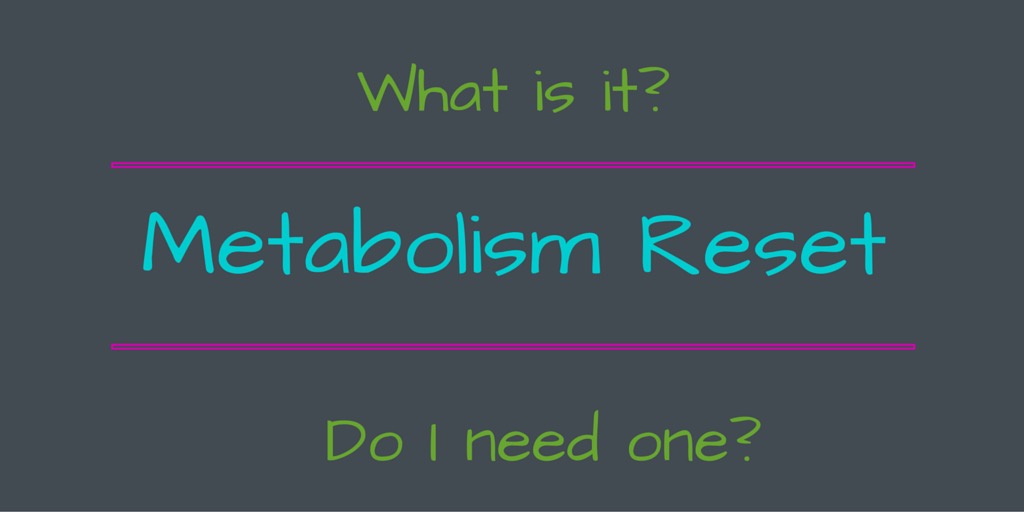
by EM2WL | Apr 21, 2015 | Increasing calories, Metabolism Reset, TDEE/BMR
Do I Need A Metabolic Reset?
If you are new to this concept of “eating more” and fueling your body properly, you undoubtedly have a lot of questions. You know you should eat  more, but how much? What is a metabolic reset? (And, do I need it?) How long will a reset take? Will this work for me, or am I that “special snowflake” that won’t have success with this? And then thoughts like “I got fat eating more. Why would I want to do that to lose weight?” start running through your mind. It’s enough to make you want to run for the hills!
more, but how much? What is a metabolic reset? (And, do I need it?) How long will a reset take? Will this work for me, or am I that “special snowflake” that won’t have success with this? And then thoughts like “I got fat eating more. Why would I want to do that to lose weight?” start running through your mind. It’s enough to make you want to run for the hills!
Just the idea of increasing calories is a terrifying thought for most people, especially when you have had the “eat less/move more” mentality drilled into your head for your whole life. We get it! We were all there once. Brainwashed by commercials with promises to get you into that skimpy bikini (or Speedo) by summer… The truth of the matter is that these diets will work for a little while, but then the end result is that your weight loss will stall as your metabolism gradually slows down to match the intake. This is the point when most of us start doing some research and realize we have been under-feeding our bodies and need to reverse the tides…
After deciding to take the plunge into the world of Eat More 2 Weigh Less, one of the first questions many people have is: “Do I need to do a metabolic reset?” Well, the answer to this question is as individual as the person asking it.
 ○ Those with a recent history of eating consistently over their TDEE should be able to calculate their TDEE, jump right in at a 15% cut, set their macros at 40/30/30 (40% Carbs, 30% Protein, 30% Fat), and begin the process fairly quickly. These people have been over-eating and have most likely not compromised or slowed their metabolisms in any way, so their bodies should respond quite well to a small deficit. This is the easiest case scenario… No metabolic reset necessary, as they have essentially already done it by previously over-eating!
○ Those with a recent history of eating consistently over their TDEE should be able to calculate their TDEE, jump right in at a 15% cut, set their macros at 40/30/30 (40% Carbs, 30% Protein, 30% Fat), and begin the process fairly quickly. These people have been over-eating and have most likely not compromised or slowed their metabolisms in any way, so their bodies should respond quite well to a small deficit. This is the easiest case scenario… No metabolic reset necessary, as they have essentially already done it by previously over-eating!
○ However… Those who come from long term low calorie dieting, binge/restrict cycles, eating disorders…etc. will have a very different process to go through as their bodies and brains adapt and finally accept the increased caloric intake. Often, years of severe caloric restriction will have resulted in a suppressed metabolism … one which has slowed down to match the decreased intake. When we consistently eat at a caloric deficit, the body will naturally assume that this deficit is now maintenance and downshift the metabolism to meet this demand. If this is your case, a reset is highly recommended.
Potentially, you could go right to that 15% cut in hopes that you would see results, but most likely, you will just be prolonging the process. You see, as you slowly increase your calories to that 15% cut, your body will simply adapt and reset at this 15% cut level, seeing that as the new “normal”. You will have, in fact, reset to your cut value, and therefore, the body will not see it as a cut. From that point, the only real option is to do a true reset, where you eat at TDEE or Maintenance calorie levels for a prolonged period of time (more about this later…) And THEN, once the body has accepted your intake at TDEE as normal, when you introduce that small 15% deficit, the body should react positively by shedding some fat.
SO, if you have been dieting for a prolonged period of time, suffered from an eating disorder or even cycles of binging followed by severe caloric restriction, do yourself a favor and work your intake slowly up to TDEE and take the time to do a metabolic reset. This process will give your body a break from the stress of dieting and allow it to become accustomed to eating proper amounts of food again. If you don’t do it at the onset, most likely you will be doubling back and doing it somewhere further down the road when you don’t see the results you were hoping to see. Skip this vital step, and you will most likely be prolonging the length of your journey rather than speeding it up.
How to Find Your “True” TDEE
So… you have decided that you need to do a metabolic reset in order to get your metabolism back up and running where it should be. Now what?
The first thing that you need to in order to start this process is to determine your TDEE (Total Daily Energy Expenditure). Your TDEE is the amount of calories that your body requires to maintain your weight. That (TDEE) figure includes your BMR (Basal Metabolic Rate) as well as your normal day-to-day activities plus any formal exercise. In theory — based on this definition — if we eat at our TDEE, we will maintain our weight. The problem is that this theory does not always hold true. When we have been under-eating and over-exercising, our body will adapt to this stress. In an attempt to maintain homeostasis, it will down-regulate the metabolism to match the decreased intake. The result will often be a suppressed metabolism. This explains why suddenly you may find yourself gaining weight while doing hours of cardio and eating 1,200 calories or less a day … your body has adapted! You have decreased your intake and increased your exercise for a long enough period of time that the body has finally slowed down your metabolism to match the intake. Your body is doing what it is supposed to do = maintain homeostasis.
To get your metabolism back up and running where it should be, you’ll need to increase your caloric intake back up to TDEE, or do a Metabolic Reset. To begin this process, the first thing you will want to do is enter your stats into the EM2WL weight loss calculator to get your TDEE (maintenance) calories. This will give you an idea of what your ultimate goal will be. But remember that these calculators just give you estimates. They are subject to error based on how much exercise you input into the calculator and how active you truly are. Many newbies to EM2WL lead very active lives, and may actually burn a lot more through their day-to-day activities. If they simply enter in the 4 hours of formal exercise that they do each week, their final TDEE estimate may actually be too low.
Alternatively, you can use an on-body device such as a FitBit, or Apple Watch to get an idea of how much you burn each day. These are likely 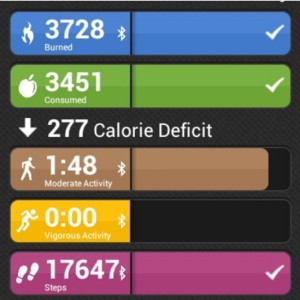 more accurate than the calculators, just because they’re monitoring how much activity you actually do each and every day. However, these devices are also not 100% accurate because they don’t accurately calculate calories burned from your strength training workouts.
more accurate than the calculators, just because they’re monitoring how much activity you actually do each and every day. However, these devices are also not 100% accurate because they don’t accurately calculate calories burned from your strength training workouts.
So, where does this leave you? How do you figure out your “true” TDEE? You have your TDEE estimate and/or your “on-body device” average, but ideally you will also test out these numbers and make sure they are truly accurate for you.
The normal process for doing a Metabolic Reset involves increasing your caloric intake up to your calculated TDEE and staying at that level for a minimum of 8 – 12 weeks (much longer if you come from a history of severe dieting or caloric restriction). We generally recommend that you make this increase slowly, adding approximately 50-100 calories to your daily intake each week. Of course, you can certainly jump right up to TDEE quickly (“rip the band-aid”) or make those increases more substantial, but you may find the increases on the scale to be discouraging. By making the increases more gradually, you can often avoid some of the gains seen during the “rip the bandaid” approach. We leave this to the individual as a personal decision.
Now, back to the original question … “How Do I Find My True TDEE?” In order to do this, you will most likely need to go through a trial and error process. You have your calculated TDEE, but how do you figure out if that is “true” or not? As you are going through the process, gradually increasing your daily caloric intake 100 calories a week, keep an eye on the scale. Generally, as you make these increases, you may see the scale jump up a pound or two, and then during the course of the week, it will generally trend back downwards, often ending up right back where you started, pre-increase. As you get closer and closer to your calculated TDEE, you may find that it takes a bit longer for your weight to stabilize and drop back down. At this point, if you find that happening, you may want to take it a bit slower. Then if your weight has not stabilized and dropped back down by the end of the week, wait until it does before making any further increases.
Once you are at or near your calculated TDEE, watch for slow and steady increases on the scale which do not stabilize over time. If you do start seeing gains like this, you have most likely surpassed your TDEE, and which point you can back down on your intake by 100 calories or so and you should be right there — at your true TDEE.
What many people find is that their actual TDEE may be higher than what they get with the calculators. Often their day-to-day activities (chasing kids, doing laundry…etc.) makes them more active than the activity level that they chose when inputting their data into a calculator. We often tend to underestimate how active we are. Many people find that they are actually able to eat 100 or 200 calories more than the calculators give them, simply by “testing the waters” and not blindly accepting those numbers as accurate.
So, give it a try! Surely by now, you have resigned yourself to the fact that this is not a fast process, so take the time to make sure you know your “true TDEE.” Don’t blindly trust the calculators, test it out and see how much you can really eat before you start seeing true gains. Ignore those monthly fluctuations and the jumps that occur after increasing your intake. Keep pushing your intake higher and higher until you start to see slow, steady gains that do not stabilize over time. As hard as it may be, don’t worry about gaining. You can always just drop your intake down and those gains will stop. Remember: nothing that you are doing during this process is irreversible. Take the time to do it right … right from the beginning. You won’t regret it!
When Does My Reset Start?
You have finally gotten brave and decided to do a metabolic reset. You have diligently upped your intake slowly to your calculated TDEE level.

You added 100 calories on each week, and faithfully continued this process until you got your intake from rock bottom all the way up to your maintenance calories, maybe taking months to get to this point. Yay! Now you have reached TDEE, and you are ready to cut, right? NO. Now, this is the point where your metabolic reset actually begins. This is the point where the healing of body and mind starts to take place as your body begins to trust that this new, increased intake will be consistent, and not just another fluctuation, like so many times in the past. Yes, you have just spent what is possibly a few months getting your intake up to maintenance levels, but technically, your reset has not yet begun until now.
Now, you will need to stay eating consistently at TDEE levels for a minimum of 8 – 12 weeks, possibly longer if you come from a long history of severe caloric restriction. Some people have found it takes as long as a year to become fully healed and ready to move on. This part of the journey is as individual as the person taking it. Everybody is different and one size certainly does not fit all. Use this time to introduce strength training into your life, if you haven’t already done so, and enjoy the benefits of building some muscle (which really is possible now that you are finally eating at TDEE). Sit back and truly learn to love eating more.
When Is My Reset Over?
Okay, so you didn’t rush the metabolism reset. You have eaten diligently at maintenance levels for two, three, eight, maybe even twelve months. Congratulations! Now, how do you know when it is over? How do you know when it is the right time to cut?
There are a few key things to look at when making that decision:
○ One thing to consider is the mental aspect of the journey. For many, it is just as important as the physical part. Hopefully, during your reset you have changed the way you view your food. Food is no longer the enemy, and you have begun to see and appreciate it as a much-needed source of fuel. You have learned to no longer fear carbs or fats, and instead fit them in to your daily life (yes, even chocolate!). We feature a lot of Success Stories from EM2WL followers on our website, and hopefully when you read them you have noticed the mental transitions that had to take place both before and during the reset process. This is a vital part of the process. If you have not fully embraced eating more, then you are not ready for a cut.
○ Are you rushing to finish your reset? Are you in a hurry to start that cut? Are you counting down the days until you can introduce that 15% deficit and begin your weight loss journey? If this is you, then you are most likely not ready. At least not mentally…. When your reset is over, you will know it. You will have fully accepted that this is your new way of life. In fact, when you are ready, you will actually be dreading the day you have to give up any calories! Suddenly that 15% deficit will seem huge and you will be contemplating starting with just a 10% cut, or maybe even 8%, or 5… You get the idea :-)
○ As far as the physical aspect, if you have been eating at an extreme deficit prior to beginning your reset and had symptoms of metabolic damage such as fatigue, hair loss, brittle nails, low body temperature and/or loss of menstruation, you should begin to see all of these improving. Seeing improvements in these areas is a good sign that your body is recovering and now using those additional calories for normal maintenance functions, and not simply the vital ones.
 ○ Your weight will have stabilized. Often, the reset process comes with some associated weight gain. Some of that is water, as glycogen stores are refilled. Some of it may come from other sources. When we subject our bodies to severe caloric restriction and excessive cardio, the weight that is lost is not all necessarily fat. The weight that is lost can also be from muscles, tendons, ligaments and even brain tissue! As we begin to re-feed and nourish our bodies properly, the body will begin to rebuild that muscle, tendon, ligament and brain tissue and that will show up as a gain on the scale. Note: this is just another reason to not rely on the scale as your sole method for gauging success. Not all scale losses are good ones! … I mean, who wants to lose brain tissue?!
○ Your weight will have stabilized. Often, the reset process comes with some associated weight gain. Some of that is water, as glycogen stores are refilled. Some of it may come from other sources. When we subject our bodies to severe caloric restriction and excessive cardio, the weight that is lost is not all necessarily fat. The weight that is lost can also be from muscles, tendons, ligaments and even brain tissue! As we begin to re-feed and nourish our bodies properly, the body will begin to rebuild that muscle, tendon, ligament and brain tissue and that will show up as a gain on the scale. Note: this is just another reason to not rely on the scale as your sole method for gauging success. Not all scale losses are good ones! … I mean, who wants to lose brain tissue?!
As you have worked your way through the reset process, chances are, your weight may have fluctuated. A lot. By the time your reset is complete, these fluctuations should have stabilized. Yes, you will still have those ups and downs caused by water retention following a high sodium day, or water retention due to DOMS following a heavy lifting day, or that normal 3 – 5 pound gain many see around TOM, but overall your weight should be holding fairly stable.
○ By the time you are ready to cut, all of those overly full, bloated feelings that you may have experienced as you increased your calories should have subsided. You should feel comfortable eating at your Maintenance calories (TDEE). You should not feel like an over-stuffed turkey on Thanksgiving, in fact you should feel hungry again! These are all signs that your metabolism has returned to a normal state.
No matter what your dieting history, EM2WL will work for you. It is all just a matter of doing your research, figuring out your “numbers” and determining what plan will be correct for you, and then putting that plan in place to get you to your caloric goal. Each person’s plans will be different. Some people will see results in as little as 4 – 6 weeks, while others may take as long as a year, depending on their dieting history (the more severe the dieting history, the longer the “metabolic healing” can be expected to take). Research and patience will be key, in either case. And, if you need help along the way, EM2WL is here to help with our online courses and coaching programs.
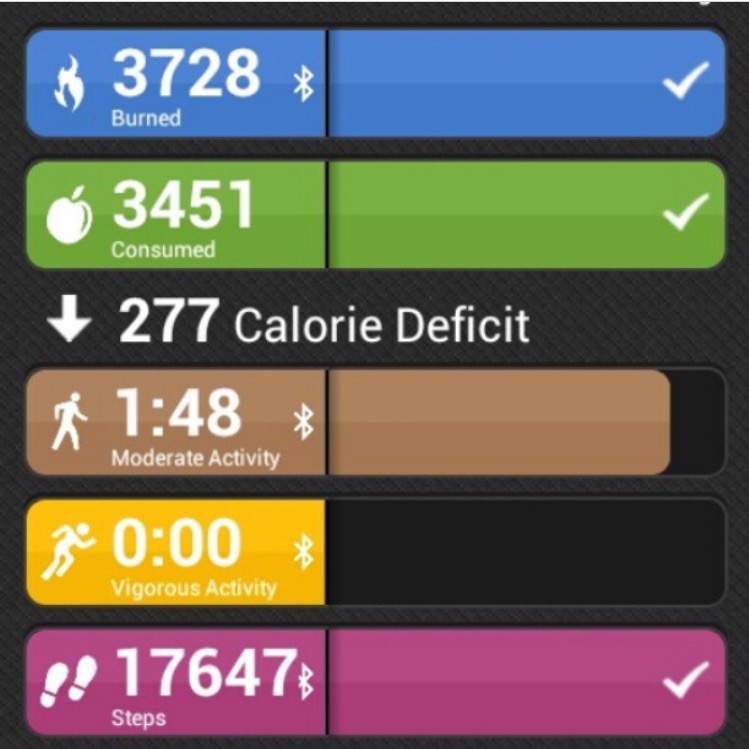
by | Mar 31, 2015 | Increasing calories, Metabolism Reset
 So… You’ve been doing some reading and have come to the conclusion that you have been under-eating, over exercising, and your metabolism is now suffering. You may have also decided that you need to do a metabolic reset in order to get your metabolism back up and running where it should be. Now what?
So… You’ve been doing some reading and have come to the conclusion that you have been under-eating, over exercising, and your metabolism is now suffering. You may have also decided that you need to do a metabolic reset in order to get your metabolism back up and running where it should be. Now what?
The first thing that you need to in order to start this process is to determine your TDEE (Total Daily Energy Expenditure). Your TDEE is the amount of calories that your body requires to maintain your weight. That (TDEE) figure includes your BMR (Basal Metabolic Rate) as well as your normal day-to-day activities plus any formal exercise. In theory — based on this definition — if we eat at our TDEE, we will maintain our weight. The problem is that this theory does not always hold true. When we have been under-eating and over-exercising, our body will adapt to this stress. In an attempt to maintain homeostasis, it will down-regulate the metabolism to match the decreased intake. The result will often be a suppressed metabolism. This explains why suddenly you may find yourself gaining weight while doing hours of cardio and eating 1,200 calories or less a day … your body has adapted! You have decreased your intake and increased your exercise for a long enough period of time that the body has finally slowed down your metabolism to match the intake. Your body is doing what it is supposed to do = maintain homeostasis.
To get your metabolism back up and running where it should be, you’ll need to increase your caloric intake back up to TDEE, or do a Metabolic Reset. To begin this process, the first thing you will want to do is go to an online calculator and enter your stats to get your TDEE (maintenance) calories. This will give you an idea of what your ultimate goal will be. But remember that these calculators just give you estimates. They are subject to error based on how much exercise you input into the calculator and how active you truly are. Many newbies to EM2WL lead very active lives, and may actually burn a lot more through their day-to-day activities. If they simply enter in the 4 hours of formal exercise that they do each week, their final TDEE estimate may actually be too low.

Apps sync to your preferred device to give you an idea of how many cals you burn each day
Alternatively, you can use an on-body device such as a FitBit, or BodyMedia band to get an idea of how much you burn each day. These are likely more accurate than the calculators, just because they’re monitoring how much activity you actually do each and every day. However, these devices are also not 100% accurate because they don’t accurately calculate calories burned from your strength training workouts.
So, where does this leave you? How do you figure out your “true” TDEE? You have your TDEE estimate and/or your “on-body device” average, but ideally you will also test out these numbers and make sure they are truly accurate for you.
The normal process for doing a Metabolic Reset involves increasing your caloric intake up to your calculated TDEE and staying at that level for a minimum of 8 – 12 weeks (much longer if you come from a history of severe dieting or caloric restriction). We generally recommend that you make this increase slowly, adding approximately 50-100 calories to your daily intake each week. Of course, you can certainly jump right up to TDEE quickly (“rip the band-aid”) or make those increases more substantial, but you may find the increases on the scale to be discouraging. By making the increases more gradually, you can often avoid some of the gains seen during the “rip the bandaid” approach. We leave this to the individual as a personal decision.
Now, back to the original question … “How Do I Find My True TDEE?” In order to do this, you will most likely need to go through a trial and error process. You have your calculated TDEE, but how do you figure out if that is “true” or not? As you are going through the process, gradually increasing your daily caloric intake 100 calories a week, keep an eye on the scale. Generally, as you make these increases, you may see the scale jump up a pound or two, and then during the course of the week, it will generally trend back downwards, often ending up right back where you started, pre-increase. As you get closer and closer to your calculated TDEE, you may find that it takes a bit longer for your weight to stabilize and drop back down. At this point, if you find that happening, you may want to take it a bit slower. Then if your weight has not stabilized and dropped back down by the end of the week, wait until it does before making any further increases.
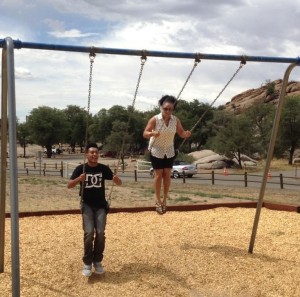
“Activity level” isn’t just about your formal workouts – many moms underestimate activity level
Once you are at or near your calculated TDEE, watch for slow and steady increases on the scale which do not stabilize over time. If you do start seeing gains like this, you have most likely surpassed your TDEE, and which point you can back down on your intake by 100 calories or so and you should be right there — at your true TDEE.
What many people find is that their actual TDEE may be higher than what they get with the calculators. Often their day-to-day activities (chasing kids, doing laundry…etc.) makes them more active than the activity level that they chose when inputting their data into a calculator. We often tend to underestimate how active we are. Many people find that they are actually able to eat 100 or 200 calories more than the calculators give them, simply by “testing the waters” and not blindly accepting those numbers as accurate.
So, give it a try! Surely by now, you have resigned yourself to the fact that this is not a fast process, so take the time to make sure you know your “true TDEE.” Don’t blindly trust the calculators, test it out and see how much you can really eat before you start seeing true gains. Ignore those monthly fluctuations and the jumps that occur after increasing your intake. Keep pushing your intake higher and higher until you start to see slow, steady gains that do not stabilize over time. As hard as it may be, don’t worry about gaining. You can always just drop your intake down and those gains will stop. Remember: nothing that you are doing during this process is irreversible. Take the time to do it right … right from the beginning. You won’t regret it!
Just starting the process and need a step-by-step guide? Get our FREE Quick Start Guide!

by | Mar 18, 2015 | Increasing calories, Metabolism Reset, Testimonials, The Journey
 As you know this has been quite difficult for me. With the past of the eating disorder trying to take control. I have had many slips but never given up. I had anorexia for 10 years, being emaciated, tube fed, detained. Then bulimia for 15 years (nearly 3 years purge free) I have always had a horrible history with food and eating.
As you know this has been quite difficult for me. With the past of the eating disorder trying to take control. I have had many slips but never given up. I had anorexia for 10 years, being emaciated, tube fed, detained. Then bulimia for 15 years (nearly 3 years purge free) I have always had a horrible history with food and eating.
I had known for some time something had to change but I felt I lacked the skills to change this. I felt stuck. I felt powerless. I believed I would have to live the rest of my life diet yo-yoing, a miserable thought. I wanted to change because of my two daughters. I did not want them following my bad habits. I knew what I wanted but how to make it happen?
I spent a decade hating myself, starving myself, purging…my life was a complete mess. I’d go 30 days straight without eating and still exercising, then wondering why I was in hospital being tube fed. I wanted freedom, but I never thought I would be free. I felt like a bird trapped in a cage. My life was the same every day. Get up weigh myself, shower, gym for 2-3 hours. Shower. Go home. School. Home, read ways to burn more calories. Bed. That was my life…then there would be days I’d binge and purge from hunger, enemas, and laxatives. But my life changed for the greater good when I was in hospital detained, being tube fed, not being able to leave bed…I had that light bulb moment. From there on I gained a lot of weight, my body was confused and held onto everything I ate.
What made my recovery harder for me was having 3 miscarriages and having a premature son at 24 weeks who lived 6 days. The guilt. The hate. The anger. The depression. Talk about a major relapse.
Then I discovered EM2WL and this is where my story begins…
I have been sitting here for nearly 30 minutes wondering how to start this entry. I think with last year, trying so hard to lose weight and putting in so much effort and getting very little results has made me think. It’s been something I have been trying to put the pieces together for a little while now.
You’d think with tracking your calories for a year (and honestly) keeping to a 1400 calorie diet and going to the gym nearly every day (burning 400-500 calories) I’d have results. After weeks of trying to find information I came across “Eat More to Weigh Less” I was a little hesitant to go there and look but the other part of me was interested.
 I can starve, I can purge, but for the life of me I cannot get this weight off me healthy. I’m trying to learn, but it is hard!
I can starve, I can purge, but for the life of me I cannot get this weight off me healthy. I’m trying to learn, but it is hard!
Spending hours reading, and talking to people it has been a real eye opener. The amounts they eat and with half the exercise I’m doing and losing weight…I was/am jealous!!! Reading their stories, they were all so similar to mine, their history. Looking at the photos, amazed me. I had to admit I was very interested…
As they say if what you are doing isn’t working then something has to change. I’m ready for change.
I knew how many calories I was eating. I had a start. I went to many TDEE calculators to see what numbers it would give me. These numbers blew me away, I couldn’t believe it. It took me days for this to sink in and make some sense. My TDEE was just over 2700!!! For weight loss 2200, my jaw dropped.
I had a random thought last night, before the birth of my youngest daughter, Jasmine, I lost weight easily because I was eating more and not killing myself at the gym. Things were starting to click with me. Maybe this was the missing piece of the puzzle I needed.
I spent the past four weeks bringing my calories from 1400 to 1600 calories. I have had to change my exercise because I am draining myself, giving myself no rest or time to recover.
So I have had to make two massive scary changes.
1) Eat more
2) Less HIIT
So, right now I am working on doing HIIT 3 times a week and eating 2200 calories. No less than 2000 calories a day, no excuses.
I can do this, because I want this. This will be my year.
It has been a real challenge, good and bad, but mostly good. I have been doing a metabolism reset for nearly two months. When I first started I was on average 1400-1500 calories. I was always hungry on that, grumpy because I was hungry, the list goes on. Over the past two months I have been adding to my calories. Normally 100 calories every week, sometimes I’d stay there for two weeks. After all there was no rush, I wanted this to be for life, not just for now.
 At this current moment I’m at 2000 calories. I’ve had so many challenges and fears to overcome. The two main ones were:
At this current moment I’m at 2000 calories. I’ve had so many challenges and fears to overcome. The two main ones were:
1) I cannot eat that much. Yes I can. It’s been a process, but I can. It’s actually quite easy. A serving of mixed nuts, there is 200 calories. Not crap food but food that will make me grow strong. If I have too many calories left over I’ll have a banana smoothie, or a small bowl of ice cream. I have added food back into my diet that I thought was too high in calories… nuts, seeds, peanut butter, a glass of milk. Oh my how I love nuts!!! Little things but it all adds up. I always feel so hungry lately, it feels completely weird. I have had to learn how to balance out my food over the day, a little planning goes along way.
2) I will gain too much weight. Oh my how this did my head in… If I was eating 1300-1400 calories and not losing and gaining how could this possibly work?! But I knew in my heart, that something had to change…and now. While doing this I have not gained ANY weight. I was scared I would gain so much weight. Yet I haven’t gained ANY weight. This has really played with my head and done amazing things.
Everything I believed about eating X and no more than X calories for so long, has been so wrong. It has been life changing. I have always been jealous of people who could eat so much and gain nothing… This has been the biggest hurdle for me in my recovery. I’d eat ‘normal’ amounts and gain. Then I’d go back to what I knew worked for me, yet in reality it was only screwing me up more. My goal is to get my calories up to my TDEE (2600/2800 calories) then drop it to 2200/2400 calories. From my understanding once I’ve been at these calories for two months and do a cut I should start to lose weight.
This is not easy for me, while doing this I have had to challenge so many of my core beliefs, it is hard but it has been worth it. I just wish I knew about this much earlier. I’m really enjoying this journey, I’m really enjoying the food. I love this, this is an amazing journey…thank you for sharing it with me.
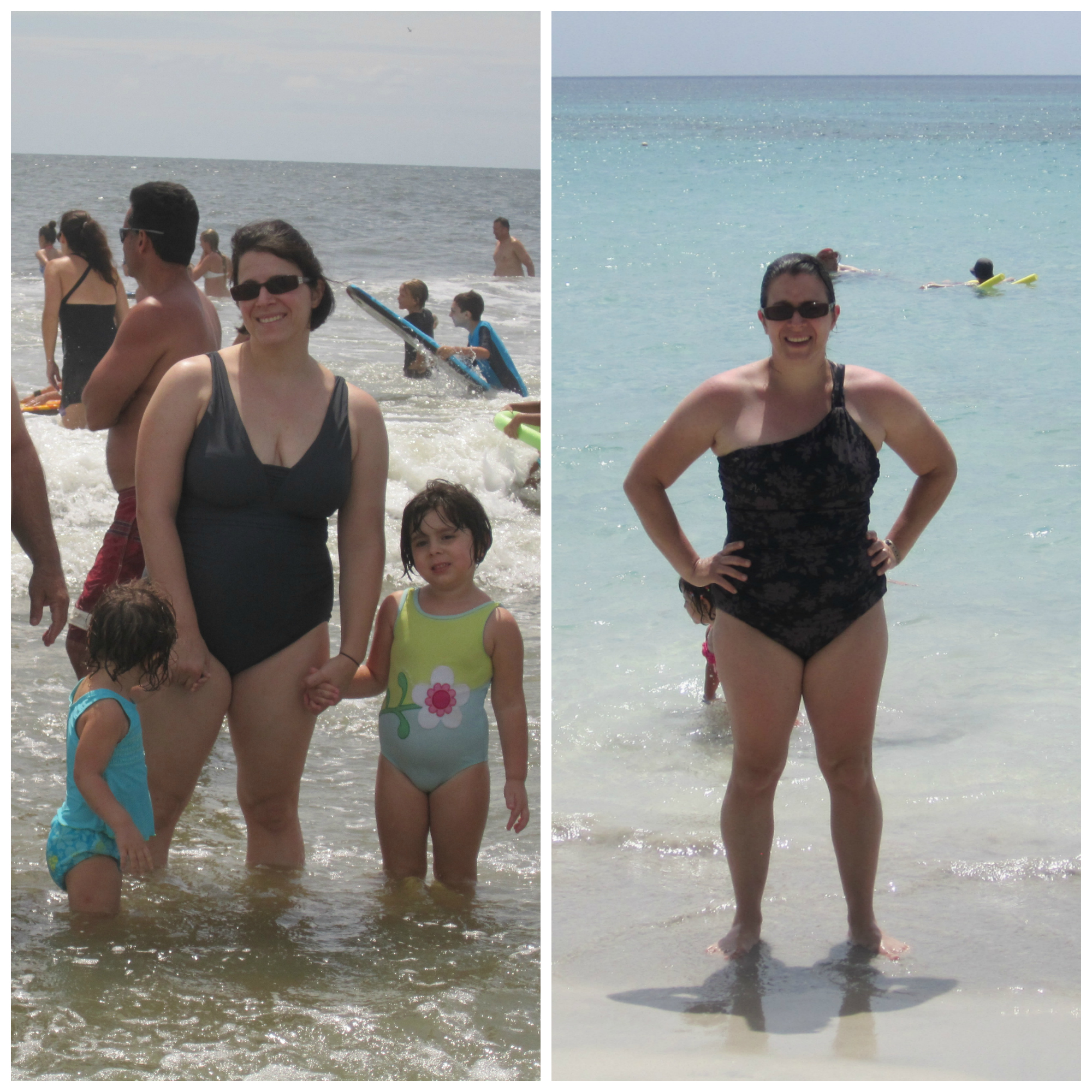
by Trish Adams | Dec 16, 2014 | Metabolism Reset, Strength Training, Testimonials, The Journey
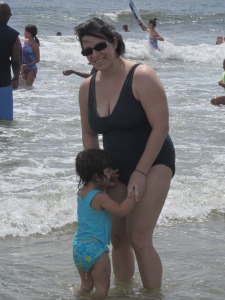 How long have you been on this journey?
How long have you been on this journey?
I discovered EM2WL in May 2012. It’s been a long journey with both ups and downs, but there is no turning back for me. It took me a while to trust the process and I’m so happy that I stuck in there. Luckily for me, I have a lot of patience, which is key with this lifestyle. Yes, lifestyle. It is not a quick fix or a diet. It’s a way of life. If you like food, like most people do, then you will like EM2WL.
When did you first learn that you needed to eat more to reach your goals?
Well my story is a bit of a lengthy one, but I think it’s one that most people can relate to. I did Weight Watchers to lose weight after both of my pregnancies. After my first pregnancy it worked great. I had lost all the weight and then some. I was also doing a lot of cardio. I was running 5 days a week and doing some light weight lifting.
After my second pregnancy, however, the weight did not come off nearly as fast with Weight Watchers. I also was not able to do my usual 5 days of running because I was diagnosed with pelvic girdle pain. It is something that I deal with to this day. I came within 8 pounds of my pre-pregnancy weight but my clothes just didn’t fit the same. I was fatter! My body composition was completely different. All of that cardio and low calorie eating came back to bite me.
A few months later I stumbled across MyfitnessPal and the EM2WL group. I watched Kiki’s and Lucia’s videos about TDEE. I was intrigued to say the least and I decided to jump right in by doing a 3 month reset. I figured if the low calorie/cardio way wasn’t working, then eating more certainly couldn’t hurt.
What was your original response?
My initial response to EM2WL was disbelief. I was shocked. How could I not have known about this? How could someone eat so much food and lose fat? I just could not wrap my head around it.
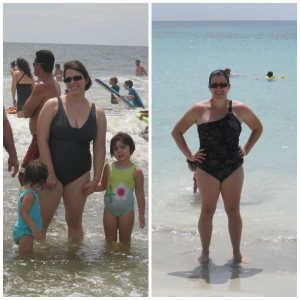 How did others around you react about your decision to discard the usual low calorie methods for weight loss?
How did others around you react about your decision to discard the usual low calorie methods for weight loss?
I think there was some hesitation from family members, except my brother. He is a personal trainer and knew exactly what I was doing. Most people didn’t understand, but I knew it was the right thing for me and that’s what matters.
How did your body react to the initial increase in cals?
Well, I gained! I ended up doing 2 resets and gained 25 pounds in a period of about one year. Yes, I know it sounds scary but I came to the realization that I had to gain before I could lose. Most people think they lose weight because they are eating LESS, but we need to realize that you’re losing weight because at one point you ate MORE. I now tell people that I actually gained weight on purpose.
I also noticed that my nails were stronger, my hair wouldn’t fall out as much, and I wasn’t cold all the time. I also saw that even though the number on the scale was either staying the same or going up, that my inches were going down.
Did your family notice or comment on any changes once you upped your calories for a period of time?
I think it sparked some curiosity in my family members. I am definitely more muscular now than I have ever been my entire life. My husband felt my arms earlier today and was impressed with my progress.
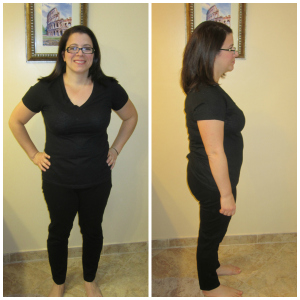 Can you describe your typical workout schedule prior to EM2WL and today?
Can you describe your typical workout schedule prior to EM2WL and today?
Prior to EM2WL I was doing an insane amount of cardio. I would run 5 days a week and do light weight lifting. By that I mean lifting no more than 5-10 pound dumbbells. And to be honest, I don’t think I could lift more than that anyway because I wasn’t eating enough.
Today I do cardio maybe once a week. Again, I suffer from pelvic girdle pain and cardio tends to aggravate that, which is actually a good thing because that means that strength training is my primary form of exercise. It helps with my pelvis. So it’s a win-win!
I lift weights 3 days a week and lift heavy. I’m midway through The New Rules of Lifting for Women and have experienced great results thus far. I am also a huge Cathe fan. I’ve done 1.5 rounds of STS before spraining my wrist this summer.
I really look forward to my workouts because I love seeing my progress. I’m at the point now where I enjoy focusing more on what my body can do versus how much weight I have lost. That stupid number on the scale doesn’t mean anything to me anymore.
In conclusion…
In conclusion, I’d like to thank Kiki, Lucia and the entire EM2WL family for the constant support. I’m so thankful that I have adopted this lifestyle. Not only for myself, but for my daughters too. They know when they see me exercising that I’m doing it so I can be strong, not so I can be skinny.

 When did you first learn that you needed to eat more to reach your goals? What was your original response?
When did you first learn that you needed to eat more to reach your goals? What was your original response?  How did your body and scale in clothes, etc, react to the initial increase in calories?
How did your body and scale in clothes, etc, react to the initial increase in calories?  Have your fitness and health goals changed? For example, do you still monitor aim or maintain scale weight, or has your focus shifted more to performance or other goals?
Have your fitness and health goals changed? For example, do you still monitor aim or maintain scale weight, or has your focus shifted more to performance or other goals? What has been the biggest revelation you’ve had since increasing your calories and lifting heavy weights?
What has been the biggest revelation you’ve had since increasing your calories and lifting heavy weights? 
 Any parting words of encouragement for those who are new to eating more, struggling with the decisions to fuel properly?
Any parting words of encouragement for those who are new to eating more, struggling with the decisions to fuel properly?  However, I can honestly say it’s the best 8 pounds I’ve ever gained! It was a great experiment for me to learn what my body needed and how I could feed it more fuel so I could enjoy my life more. There’s no point in dieting down just to be miserable for the rest of your life. Find a way that you can eat and move that you love and that is sustainable for you for the rest of your life.
However, I can honestly say it’s the best 8 pounds I’ve ever gained! It was a great experiment for me to learn what my body needed and how I could feed it more fuel so I could enjoy my life more. There’s no point in dieting down just to be miserable for the rest of your life. Find a way that you can eat and move that you love and that is sustainable for you for the rest of your life. After spending most of her life since childhood overweight or morbidly obese, Heather Robertson finally resolved to lose the weight. It took five years, during which time she had three c-section pregnancies and a double-hernia operation, but she managed to lose 170 pounds. Over the past three years since reaching her goal weight, she’s learned the importance of developing a maintenance mindset.
After spending most of her life since childhood overweight or morbidly obese, Heather Robertson finally resolved to lose the weight. It took five years, during which time she had three c-section pregnancies and a double-hernia operation, but she managed to lose 170 pounds. Over the past three years since reaching her goal weight, she’s learned the importance of developing a maintenance mindset. 

















 At this current moment I’m at 2000 calories. I’ve had so many challenges and fears to overcome. The two main ones were:
At this current moment I’m at 2000 calories. I’ve had so many challenges and fears to overcome. The two main ones were:

 How did others around you react about your decision to discard the usual low calorie methods for weight loss?
How did others around you react about your decision to discard the usual low calorie methods for weight loss?
Recent Comments